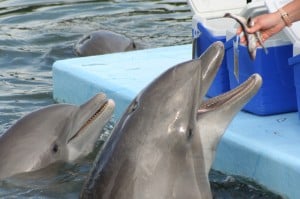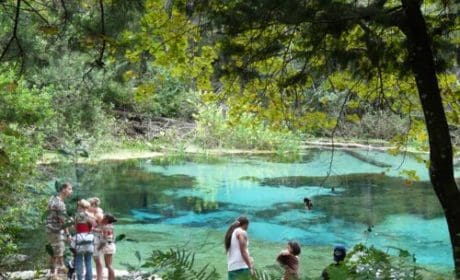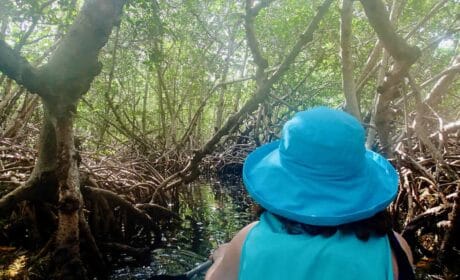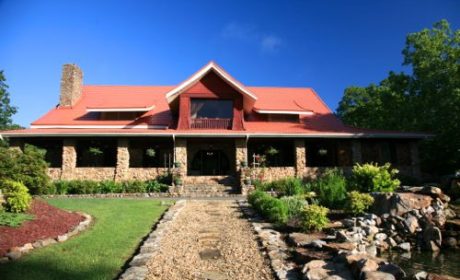Does a visit to the Flordia Keys sound like your type of baby boomer spring break? You’re in luck because there’s a Florida travel expert in the house.
Laura Martone, author of the guidebook, Moon Florida Keys, is here to advise us. Be sure to read to the end of the post to see how you can win your very own signed copy of Laura’s book.
While much of America still longs for spring, the Florida Keys — situated between the Gulf of Mexico and the Atlantic Ocean — beckon baby boomer travelers with relatively mild temperatures and a slew of outdoor activities. Although you might be familiar with Key West, a town known for rowdy celebrations like Fantasy Fest, there’s more to the Keys than America’s Southernmost City. Here are some suggestions for making the most of your Florida Keys adventure:
The Upper Keys

Via the Overseas Highway (U.S. 1), your first stop should be Key Largo, where outdoorsy baby boomers can hike or bike amid the butterflies and crocodiles of Dagny Johnson Key Largo Hammock Botanical State Park. Farther south, you can swim with playful bottlenose dolphins at Dolphin Cove or Dolphins Plus.
For other water-based activities, head to John Pennekamp Coral Reef State Park, America’s first undersea park. Here, you can swim in the warm ocean waters; take a glass-bottom boat tour; explore nearby mangrove swamps via rental canoes and kayaks; or opt for a snorkeling or diving excursion to the vibrant, offshore coral reefs of the Florida Keys National Marine Sanctuary.
Farther south, you’ll encounter Islamorada, the self-proclaimed “sportfishing capital of the world.” Art lovers should check out The Rain Barrel, a rustic, working village of painters, sculptors, and other artists. History buffs, meanwhile, might appreciate Windley Key Fossil Reef Geological State Park, which explores the construction and demise of the Overseas Railroad, or the History of Diving Museum, which features a curious collection of diving paraphernalia.
Animal lovers can watch various dolphin, sea lion, and parrot shows at the 17-acre Theater of the Sea, while those interested in fishing, kayaking, and snorkeling should head to Robbie’s of Islamorada. From this active marina, you can also access two offshore islands – Indian Key Historic State Park and Lignumvitae Key Botanical State Park.
If relaxation is your goal, visit the Island Body & Söl Spa, which features various facials, massages, and body treatments, plus beachside yoga lessons. Not far away, Pierre’s Restaurant provides one of the finest dining experiences in the Keys. Housed within a gorgeous French Colonial-style plantation overlooking a bayside beach, Pierre’s offers an eclectic dinner-only menu, featuring well-prepared steaks and seafood.
The Middle Keys

Baby boomers often appreciate the unassuming nature of the Middle Keys – the heart of which is the town of Marathon, popular among boaters and anglers. Here, you can take a canoe ride in Long Key State Park, swim with the resident dolphins at the Dolphin Research Center, stroll along wooded paths at Curry Hammock State Park, and feed sea turtles at the Turtle Hospital. In addition, you can take an exhilarating biplane ride via Conch Air or visit historic Pigeon Key, the former base camp for early 20th-century railroad workers.
Of course, you can’t leave the Middle Keys without sampling local delicacies at The Island Fish Co. Restaurant & Tiki Bar or the Castaway Waterfront Restaurant & Sushi Bar. Locals also favor Sparky’s Landing in Key Colony Beach, where the atmosphere is friendly, the prices are reasonable, and the food, from blue cheese chips to bacon-wrapped scallops, is better than expected.
The Lower Keys

Just beyond the Seven Mile Bridge, you’ll encounter Bahia Honda State Park, featuring beaches, picnic areas, cabins, campgrounds, kayak rentals, and two-hour snorkeling excursions. Bicyclists, anglers, swimmers, and boaters especially favor this park, which also includes a small nature center. In addition, bird-watchers and wildlife lovers can take advantage of three nature trails, one of which leads to the top of the Old Bahia Honda Bridge.
Farther west, anglers will find plenty of options in the Lower Keys, from deep-sea fishing on the ocean side to fishing amid backcountry channels on the gulf side. Besides fishing trips, outfitters like Strike Zone Charters offer snorkeling and diving excursions to the spur-and-groove Looe Key Reef, an ideal place for both novice and veteran scuba divers. Of course, landlubbers will appreciate the enormous National Key Deer Refuge, which predominates Big Pine Key and nurtures a variety of wildlife, from alligators to diminutive Key deer.
Active baby boomers should also take some time to explore Key West, especially the Old Town district, where most inns and hotels lie within easy walking or biking distance of numerous bars, restaurants, shops, art galleries, museums, theaters, beaches, and marinas. While here, hop aboard the Conch Tour Train, which offers a decent overview of the city, then pay a visit to the Mel Fisher Maritime Museum, the Ernest Hemingway Home & Museum, and Fort Zachary Taylor Historic State Park, all popular attractions among baby boomers. Naturally, no visit to Key West would be complete without experiencing the daily Sunset Celebration in Mallory Square.
All photo’s courtesy Laura and Daniel Martone.



